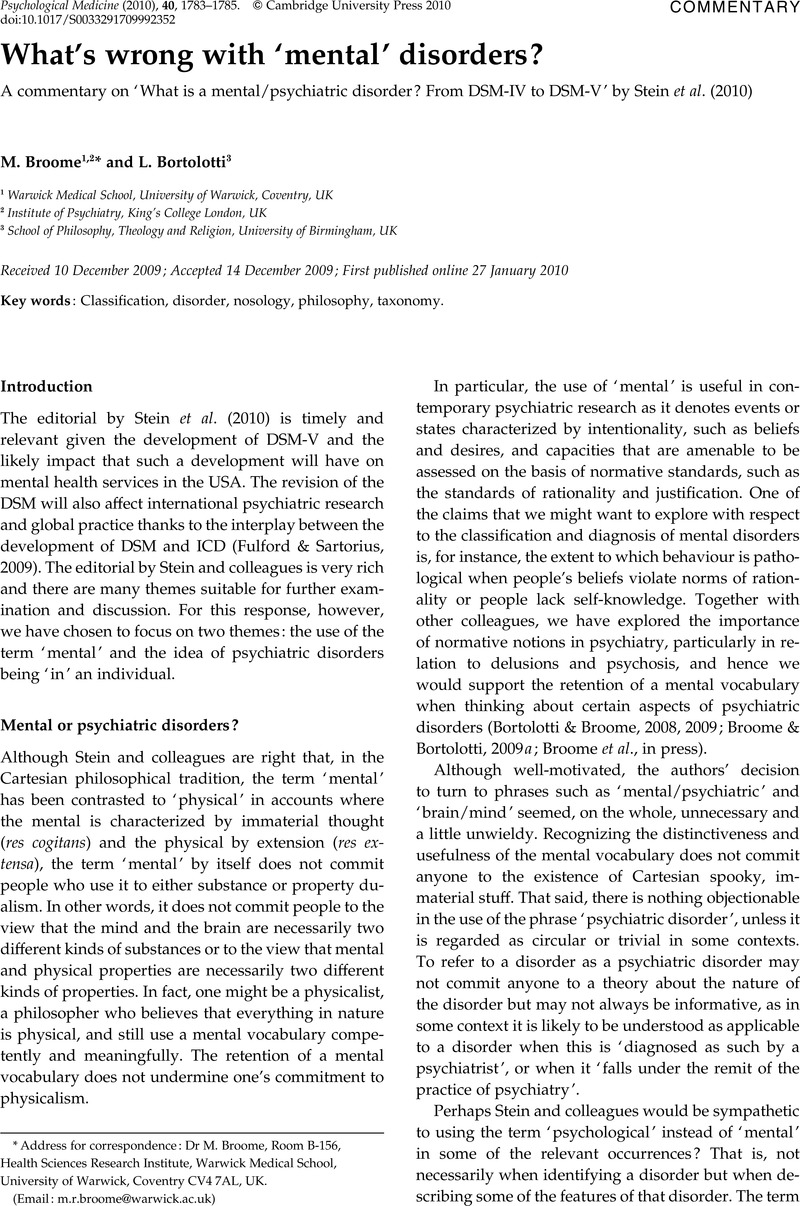Crossref Citations
This article has been cited by the following publications. This list is generated based on data provided by Crossref.
STEIN, DAN J.
PHILLIPS, KATHARINE A.
BOLTON, DEREK
FULFORD, K. W. M.
SADLER, JOHN Z.
and
KENDLER, KENNETH S.
2010.
Letter to the Editor: Response to the commentaries on ‘What is a mental/psychiatric disorder?’.
Psychological Medicine,
Vol. 40,
Issue. 11,
p.
1931.
Verhoeff, Berend
2010.
Drawing borders of mental disorders: An interview with David Kupfer.
BioSocieties,
Vol. 5,
Issue. 4,
p.
467.
Vaidyanathan, U.
Nelson, L. D.
and
Patrick, C. J.
2012.
Clarifying domains of internalizing psychopathology using neurophysiology.
Psychological Medicine,
Vol. 42,
Issue. 3,
p.
447.
Phillips, James
Frances, Allen
Cerullo, Michael A
Chardavoyne, John
Decker, Hannah S
First, Michael B
Ghaemi, Nassir
Greenberg, Gary
Hinderliter, Andrew C
Kinghorn, Warren A
LoBello, Steven G
Martin, Elliott B
Mishara, Aaron L
Paris, Joel
Pierre, Joseph M
Pies, Ronald W
Pincus, Harold A
Porter, Douglas
Pouncey, Claire
Schwartz, Michael A
Szasz, Thomas
Wakefield, Jerome C
Waterman, G Scott
Whooley, Owen
and
Zachar, Peter
2012.
The six most essential questions in psychiatric diagnosis: a pluralogue part 1: conceptual and definitional issues in psychiatric diagnosis.
Philosophy, Ethics, and Humanities in Medicine,
Vol. 7,
Issue. 1,
p.
3.
Pierre, Joseph M
2012.
Mental Illness and Mental Health: Is the Glass Half Empty or Half Full?.
The Canadian Journal of Psychiatry,
Vol. 57,
Issue. 11,
p.
651.
Verhoeff, Berend
2013.
The autism puzzle: challenging a mechanistic model on conceptual and historical grounds.
Philosophy, Ethics, and Humanities in Medicine,
Vol. 8,
Issue. 1,
p.
17.
Miller, Raissa
and
Prosek, Elizabeth A.
2013.
Trends and Implications of Proposed Changes to the DSM‐5 for Vulnerable Populations.
Journal of Counseling & Development,
Vol. 91,
Issue. 3,
p.
359.
Lorona, Rosemond T.
Fergus, Thomas A.
Valentiner, David P.
Miller, Lindsay M.
and
McGrath, Patrick B.
2018.
Self-Stigma and Etiological Attributions About Symptoms Among Individuals Diagnosed With an Anxiety Disorder: Relations With Symptom Severity and Symptom Improvement Following CBT.
Journal of Social and Clinical Psychology,
Vol. 37,
Issue. 7,
p.
536.


